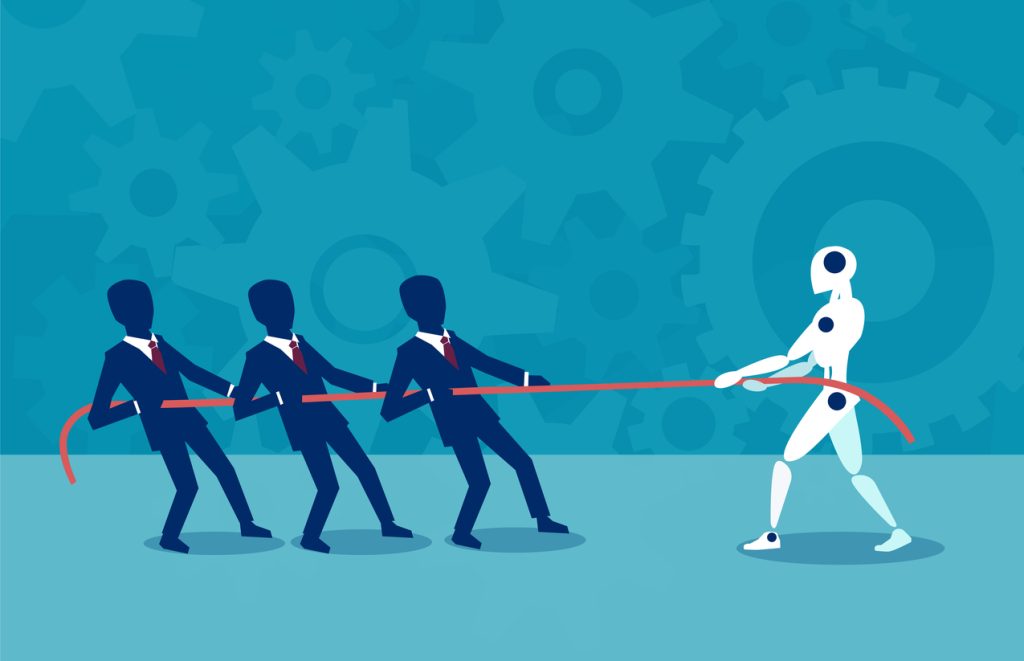With such high stakes in the world of finance and trading, it’s a fact that any mistake could be lethal. Just like earlier, traders who wanted to minimize risks always found it necessary to use different approaches, but nowadays, with AI, there are some new prospects for risk management.
Let’s start with the human side of the interaction between AI & risk management in trading as described below in an article. In this unit, we will explore concrete approaches that market players may take to minimize loss while preserving the human spirit.

Before we explore how AI manages risk, we need to understand the inherent risks involved in trading. The financial markets have been characterized over time as a ‘roller coaster; with an unpredictable, risky, and unstable nature, whether one is a newbie or expert in trading. Here are some of the primary risks that every trader should be mindful of:
The trading world also has embraced artificial intelligence with open arms, as it provides advanced analytics capabilities and automation tools to confront similar challenges. Here's a human-friendly look at how AI contributes to managing risk in trading:
Similar to a well trained detective, who searches through masses of historical data in order to reveal hidden patterns and tendencies that may be overlooked by some individuals. The tool predicts future market tendencies; therefore, providing important information that aids the trader in making better choices.
Viewing machine learning models as agile learners. As they acquire more, they become more precise with each update. Algorithms engineered using machine learning enables traders to adapt their trading strategies to avoid heavy losses due to sudden market changes.
Bots for 24/7 Trading Workhorses. Preset parameters and trading rules allow them to trade on an automatic basis. These bots work 24 hours a day, executing trades in just minutes and responding to market events before a human trader can even think of it.
Likewise, AI helps to rate risks; it constantly monitors the market situation to detect alerts. With it, traders can get real-time risk assessment and warning, enabling them to act fast to minimize their losses when necessary.
AI may assess attitude to market by analyzing news articles, social network conversations or other types of information. Sentiment analyzes how news and events could affect a stock’s movement, which traders may use to their advantage.
Now that we've explored how AI can aid risk management, let's discuss specific strategies that traders can employ to reduce losses while harnessing the power of AI:
AI in Trading: Algorithmic Trading. Traders will be able to construct complex algorithms that facilitate a quick execution of orders, guided by predetermined standards. Such algorithms are developed to exploit any possible short term market inefficiency and consequently reduce the risk market to minimum.

Traders can also use AI to minimize their portfolios by analyzing a range of portfolio management strategies. Spreading investments over numerous assets makes it easy for traders to dilute risks.
The traders can also use AI algorithms and set dynamic stop-loss order which changes as per market conditions. This sees the automatic exit of these stocks as soon as a substantial loss is realized, shielding the portfolio from additional losses.
The return of different trading strategies calculated by AI models is the basis of the risk factor model. In this way, traders can opt for tactics with more favorable risk reward ratio as it would reduce potential losses.
Tools driven by AI make it possible to monitor live market positions and risk incurred. On breach of the predefined risk thresholds, traders get alerts and notices for prompt response.
Stress testing of many market situations can be done by AI. Traders test their trading strategies by subjection to highly unfavorable conditions in order to see their performance when adversities emerge; this enables them to modify accordingly.
Though traders can use AI to gain an advantage over other players, they need to understand that being an ultimate solution is. Human element is paramount in making decisions.
Traders must use their judgment, interpret the wisdom generated by AI, and make necessary adjustments to their strategies. Furthermore, AI systems need routine supervision and care in order to maintain their efficiency over time.
Traditionally, risk management was an important issue that every trader aimed at maximizing his or her benefit when conducting businesses. Traders have the opportunity of developing strategies that reduce loss and increase profit margins, by using predictive analysis, machine learning, and robotization.
Nevertheless, we must admit that AI is just an artificial device rather than an alternative for professional abilities. To become a successful trader, one should have a keen grasp of the market, be able to identify risks accurately and also remain flexible when circumstances change continuously.
With the passage of time, the interrelation between human-traders and AI-assisted tools will be increasingly important to profit making in all aspects of trading.
Get 100K plus in Funding thanks to top tier Prop Trading Firms that deliver High-Profit splits of 90/10. Sign up with one today!
0 Comments